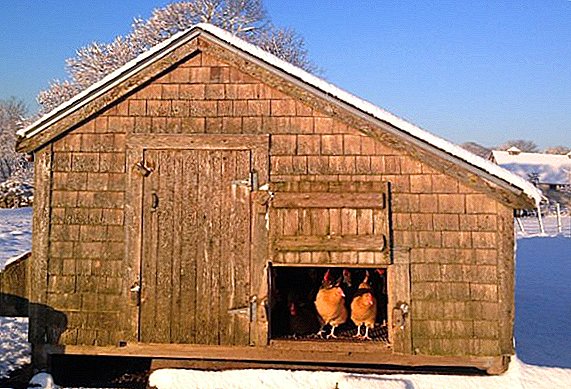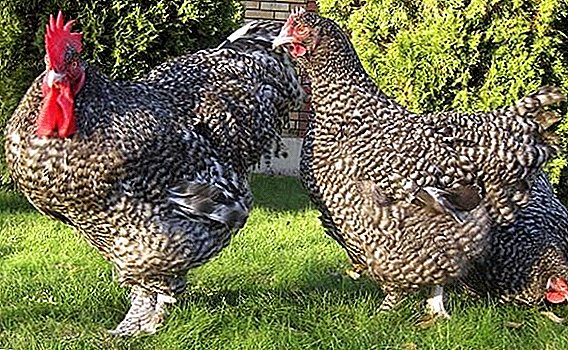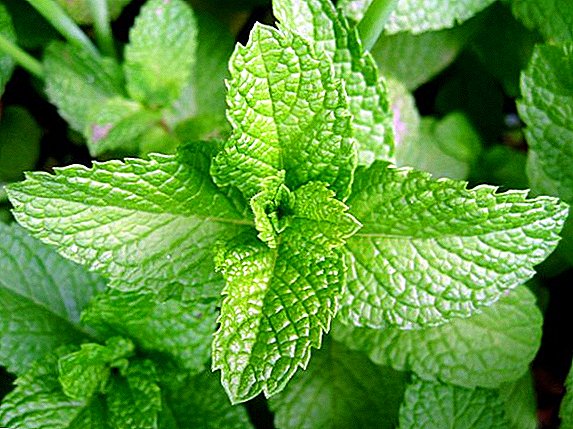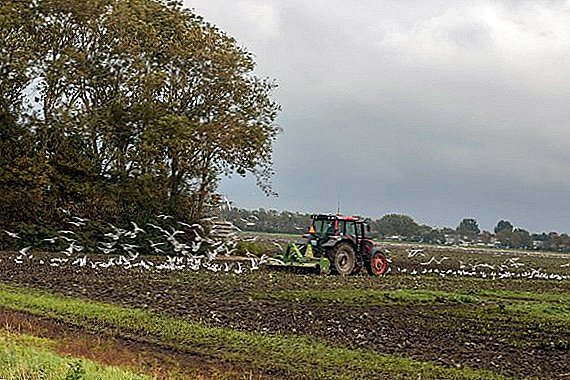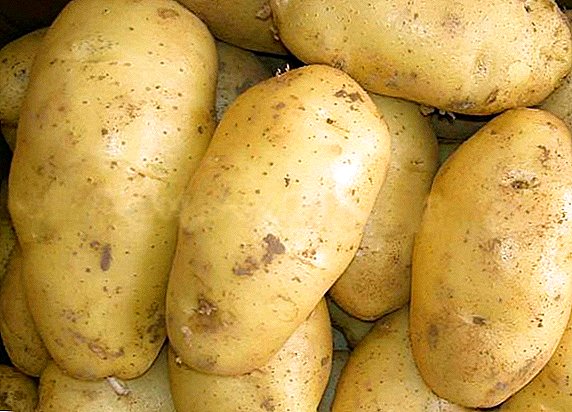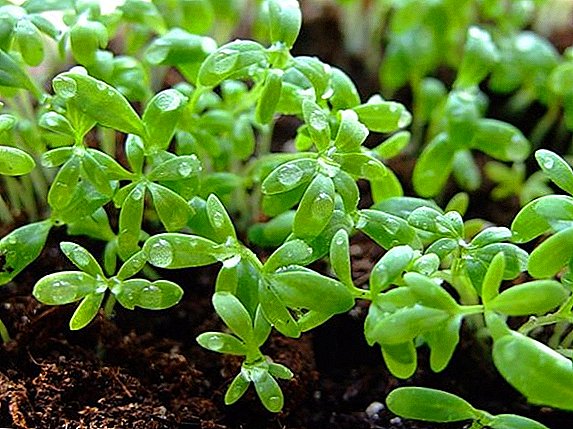 Cress - early ripening greenery, pleasing several harvests per season. Greens are unpretentious, not sick and tolerates frost well.
Cress - early ripening greenery, pleasing several harvests per season. Greens are unpretentious, not sick and tolerates frost well.
Did you know? Watercress varieties are grown in several African countries fortified with fatty oils. But the basis of these oils produce soap and perfumery products, and the oil itself is popular in local cooking.
The best varieties of watercress for the home garden
There are many varieties and types of watercress. The most favorite varieties of gardeners:
Cress "Danish" - this variety matures early. Two weeks after planting leaves appear. The leaves are spicy and spicy, delicate. One plant weighs about eight grams.
Grade "Openwork" - ripens a little more than a month. The height of the sockets to 20 cm, diameter up to 30 cm. The leaves are large, not too fibrous, light shade. Taste is gentle, without special sharpness, but with pronounced aroma.
 Variety "News" - Matures within a month, differs in a magnificent and high form of the socket. In height reaches 40 cm, in a volume of more than 60 cm.
Variety "News" - Matures within a month, differs in a magnificent and high form of the socket. In height reaches 40 cm, in a volume of more than 60 cm.
Cress "Ducat" - This is an early variety. It matures in 18 days, and is distinguished by a large percentage of germination - 99%. The weight of the plant is up to 20 g. It tastes spicy, pleasant, with a slight sharpness.
Sowing watercress on your plot
Watercress loves the penumbra, growing in such a place, it brings the most juicy and delicious greens. Watercress is considered the most cold-resistant of salads.
Terms of sowing seeds of cress
Watercress sown almost the entire spring season. The first landing begins at the end of March. Every ten days is spent replacing ripe greens. In the summer they take a break, waiting for the flowering period, in September you can sow again.
Good predecessors
The best plants predecessors, after which you can not make fertilizer - beets and potatoes. Can be sown after tomatoes, cucumbers, onions and dill.
Important! It is undesirable to sow in the area where they grew cabbage, turnips and radishes.
Soil preparation for planting
For planting watercress the soil is prepared in advance. In the autumn, they dig up a plot, choose weed grass and introduce humus. Possible complex, if the soil is not very good. Per square meter is prepared: potassium chloride - 15 g, superphosphate - 20 g, humus - 4 kg. In spring, the soil is loosened by adding compost or humus.
Scheme and depth of sowing seeds
 Seeds are sown into the soil prepared from autumn: deepen into the ground by a centimeter and cover with a film (if sown in March, the seeds may freeze over). Sow salad can be in rows, ribbon or solid beds. The shoots which have started up the third leaf, thin out. If you want large and lush rosettes, leave 5 cm between sprouts, after a dive - 10 cm. Condense the soil over the crops, and the seedlings will appear in three days.
Seeds are sown into the soil prepared from autumn: deepen into the ground by a centimeter and cover with a film (if sown in March, the seeds may freeze over). Sow salad can be in rows, ribbon or solid beds. The shoots which have started up the third leaf, thin out. If you want large and lush rosettes, leave 5 cm between sprouts, after a dive - 10 cm. Condense the soil over the crops, and the seedlings will appear in three days.
Watercress care at the site
This salad is quite low, so for the purity of the leaves soil after planting is recommended to mulch.
Interesting! In Morocco and Iran, local healers used watercress in their potions to increase the potency of men. In ancient Egypt, herbal oils eliminated coldness and sexual indifference in both men and women. Judging by the sources that have come down to us - not without result.
Regular watering
The plant loves moisture, with its lack of watercress sprouts shoot arrows and lose taste. On hot days and in the absence of precipitation, watering should be daily, in cloudy weather - once every three days. The salad responds well to spraying the leaves, its greens are poured with juice and acquire a delicate flavor.
Thinning salad
 First thinned at the time of emergence of the third leaf of the seedlings, then again - with the appearance of the fifth leaf. At the same time, keep an eye on the distance: at least 10 cm. When growing watercress, it is undesirable to do frequent thinning: individual sockets can lose their accuracy and pomp. If necessary, with thinning make fertilizer.
First thinned at the time of emergence of the third leaf of the seedlings, then again - with the appearance of the fifth leaf. At the same time, keep an eye on the distance: at least 10 cm. When growing watercress, it is undesirable to do frequent thinning: individual sockets can lose their accuracy and pomp. If necessary, with thinning make fertilizer.
Important! The ripening period of seedlings for eating is very small, the concentration of fertilizer should be minimal, if you do not want to eat nitrates.
Soil care
It is very important to monitor the cleanliness of the soil, loosen and remove weeds. On this will depend on the health of your crops, it is also important to prevent stagnant moisture in the soil. The main care for the soil is its cleansing and fertilizer before planting watercress, as it is not recommended to process the leaves during growth, for your own health.
Collection and storage of cress seeds
To collect the seeds on the site leave the largest copies of lettuce. As soon as the leaves turn brown, the rosettes are uprooted. In a dry ventilated room, the plant is dried in a hanging position, having spread a pre-film or thick paper. Crumbled seeds collected and collected are folded into fabric bags and stored in a dry place.
Prevention and control measures against possible pests
Watercress can be attacked by two pests: cruciferous flea and cabbage moth (butterfly). When attacking flea beetles, dissolve wood ash or tobacco dust in water and spray it. This method will scare away the parasite and will not harm you.
 It is more difficult to cope with the butterfly moth, so when it is detected you will not use chemical means. Butterflies appear in June, and caterpillars spend the winter in the soil. For the prevention of such a pest should treat the soil: dig up, remove weeds before planting. During the appearance of butterflies, the only thing that can help is to catch them, luring them with light. Another factor in the appearance of pests is overflow or underfilling, and in the first and second cases the plant is at risk.
It is more difficult to cope with the butterfly moth, so when it is detected you will not use chemical means. Butterflies appear in June, and caterpillars spend the winter in the soil. For the prevention of such a pest should treat the soil: dig up, remove weeds before planting. During the appearance of butterflies, the only thing that can help is to catch them, luring them with light. Another factor in the appearance of pests is overflow or underfilling, and in the first and second cases the plant is at risk.
So strictly follow all these recommendations, choose your favorite variety and plant watercress.


